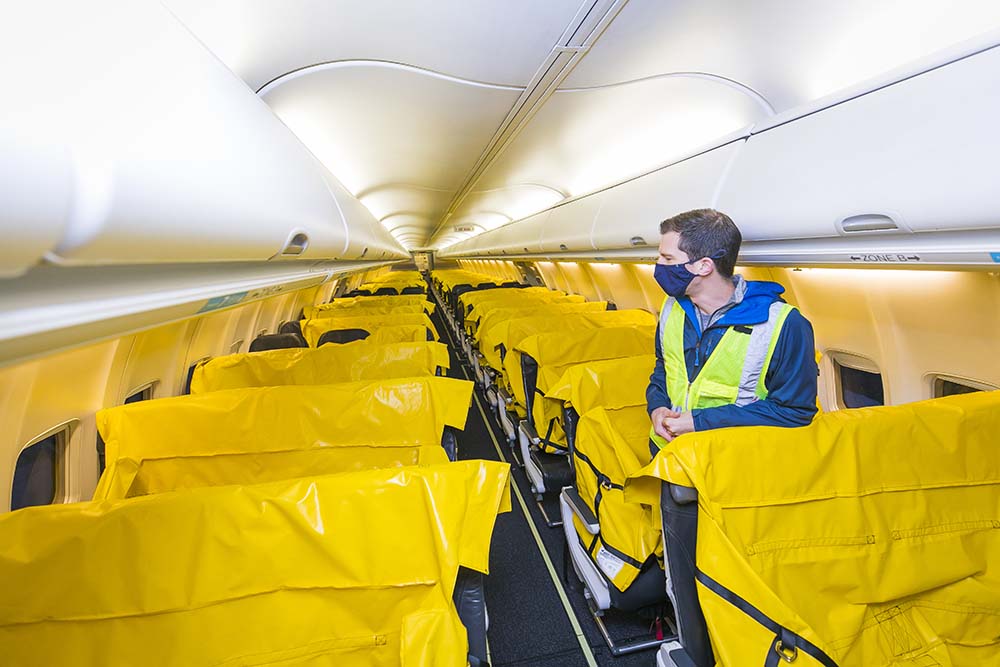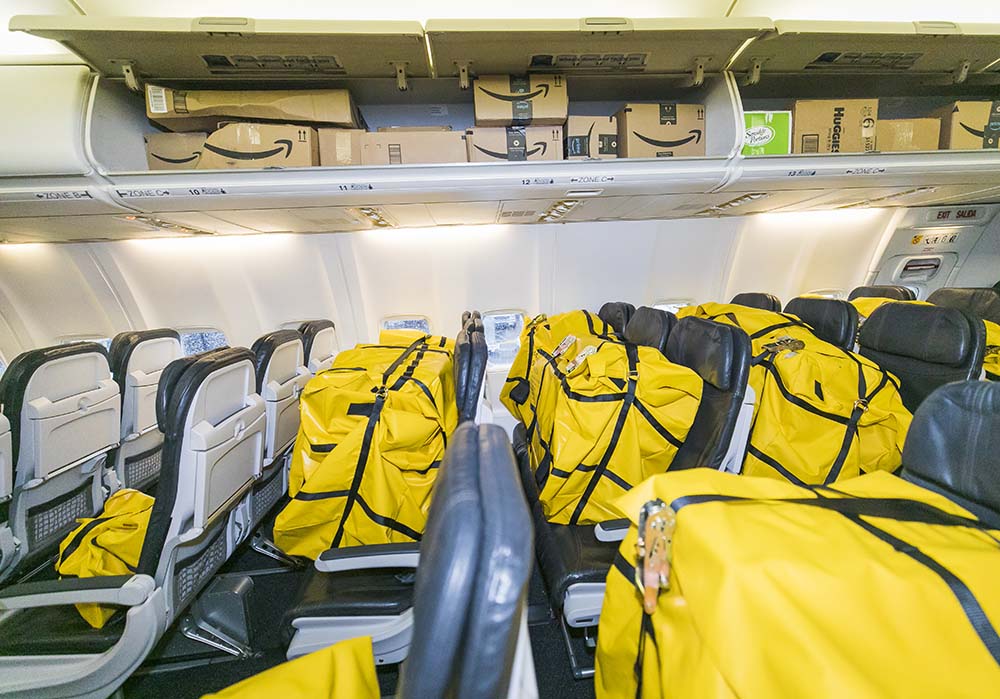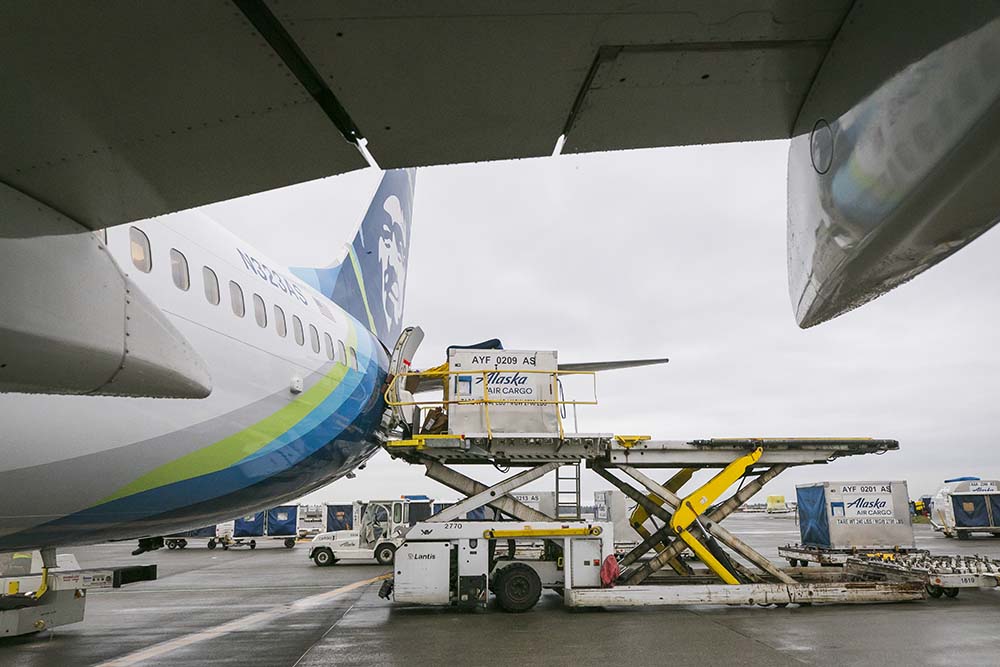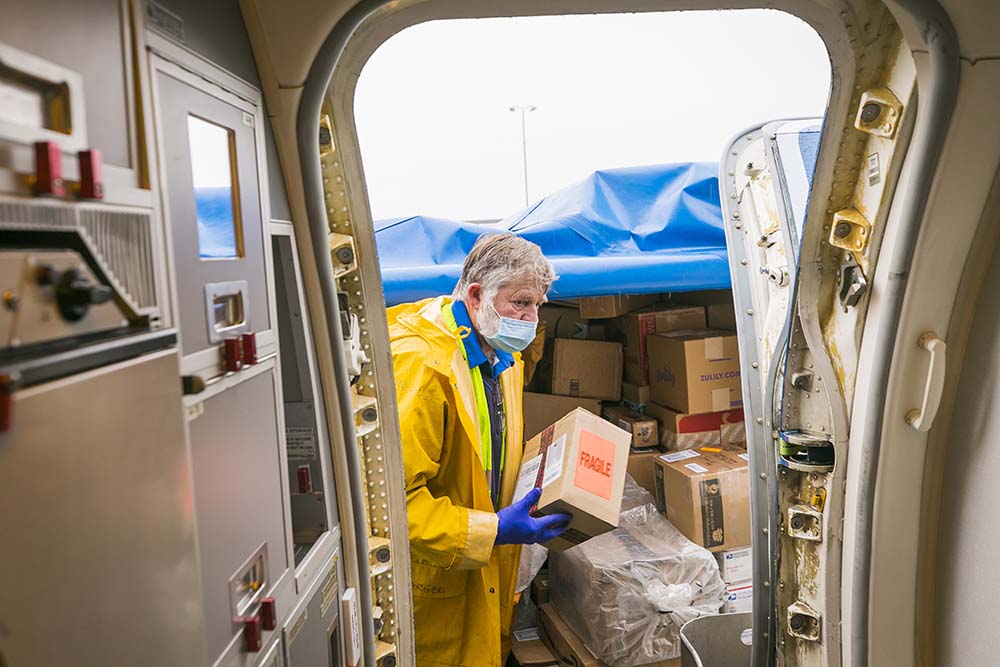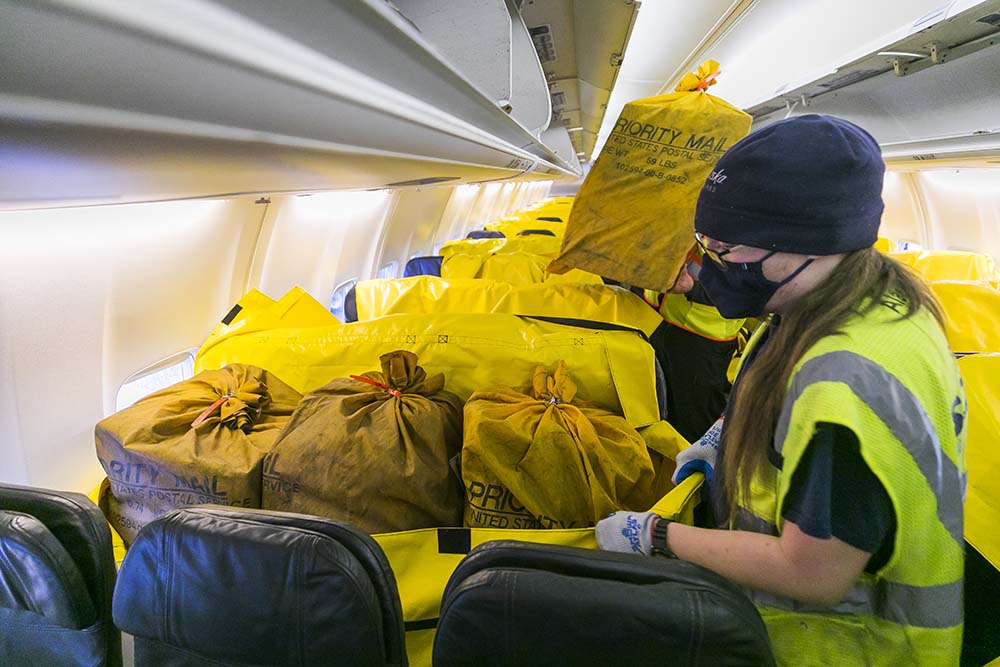You’ve got mail: Alaska Airlines sends flight carrying nearly 30,000 lbs of cargo on passenger jet
Share
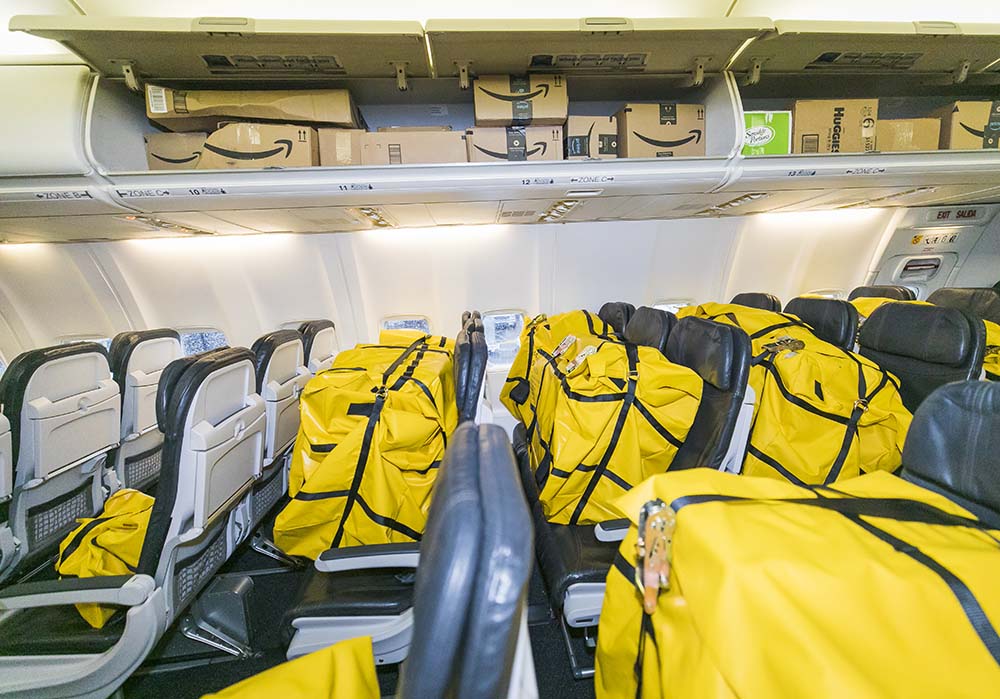
Last week, Alaska Airlines operated its first flight with a cabin full of mail instead of passengers. Since reducing our flying due to the coronavirus, we’ve been looking at other ways to utilize passenger aircraft to carry essential goods to people and businesses who need it most.
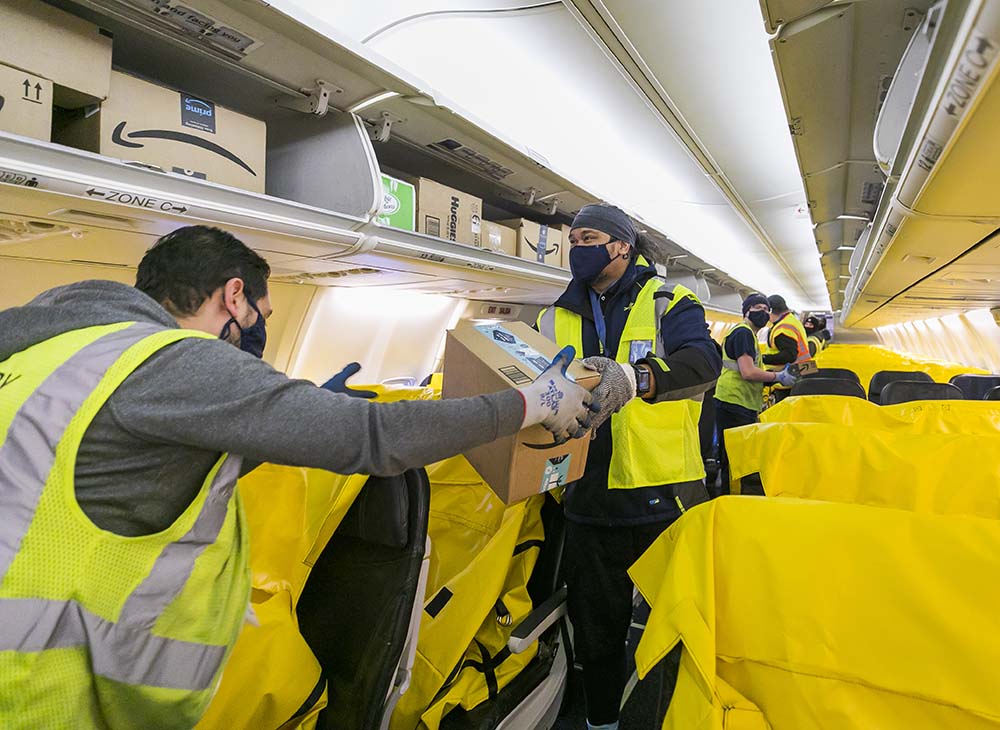
This mail-illion dollar idea and FAA-approved-design allows cargo to use all available space on the main deck for essential goods like mail, medical equipment, e-commerce packages and other freight.
Each one of these flights can carry close to 30,000 pounds of cargo, including belly capacity where luggage is typically stored.
Trying to pull off a passenger-to-freighter operation is relatively new. No other known carriers in the country are doing anything similar on domestic flights, with cargo on seats. After months of planning, we worked with HAECO, one of the world’s leading independent aircraft engineering and maintenance groups, to be their first launch customer in North America.
“Our teams have been working since the pandemic hit to identify the safest and most effective processes to increase our cargo capacity,” said Torque Zubeck, managing director of cargo. “HAECO’s design will allow us to maximize the available space, increase our cargo capacity and protect the supply chain by connecting critical cargo to the communities we serve during this public health crisis.”
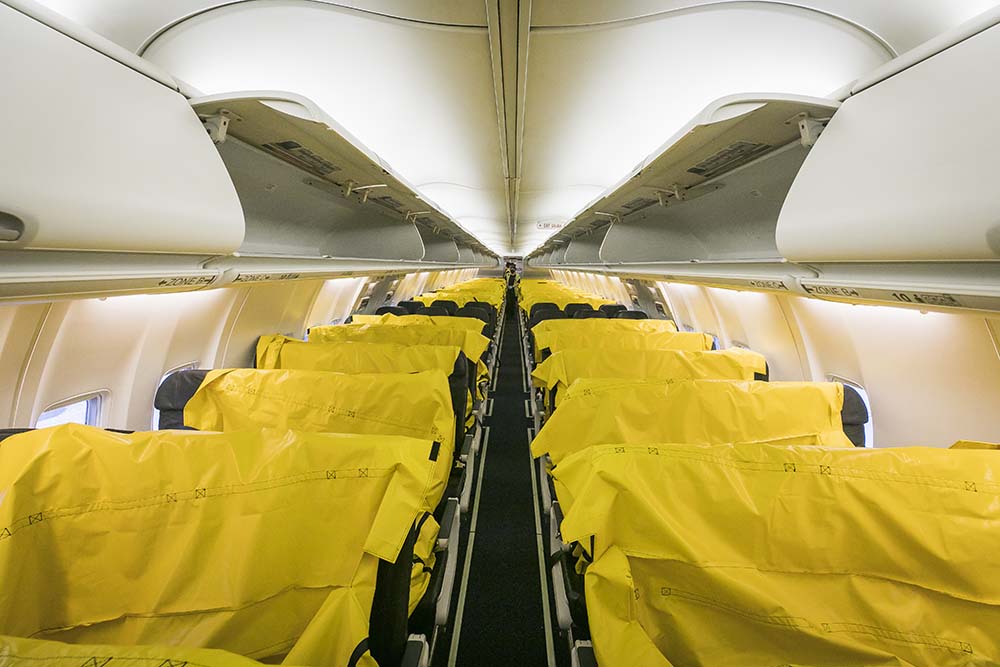
How does it work?
First, the cargo container bags are installed on the passenger rows by the maintenance team, a process that can take six to eight hours.
Each container bag is limited to 110 pounds of mail to meet FAA requirements, and once fitted, the main deck will carry an additional 13,500 pounds of cargo on top of what a passenger-only cargo flight can carry. Our seats did not require any modifications to install the containers, the existing seat belts are used to secure the bag.
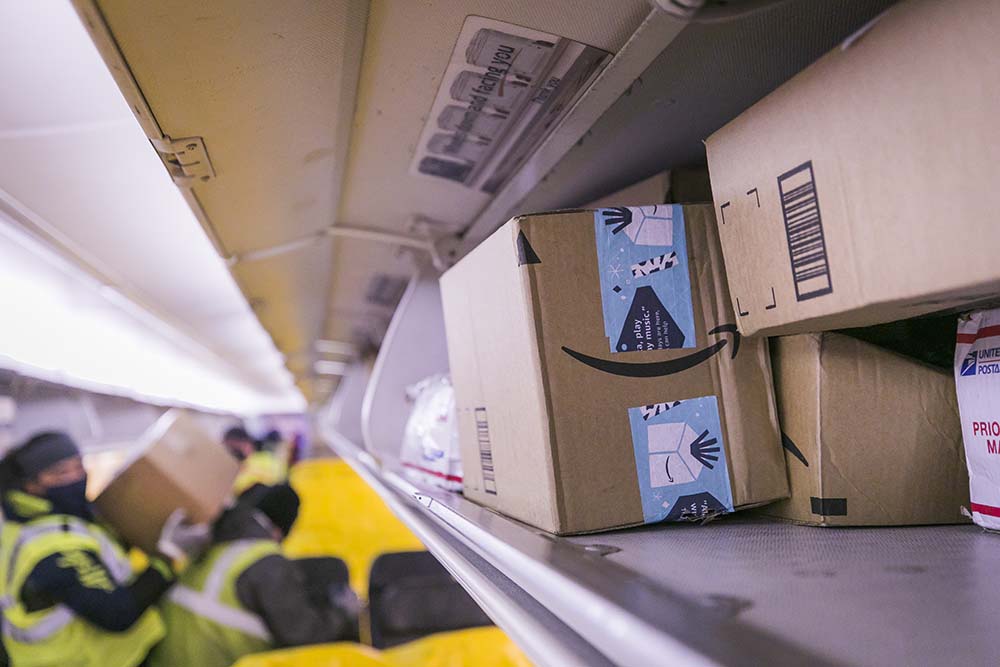
Once the containers are installed and safely secured, the cargo flight is equipped for its scheduled route. The crew for these cargo flights will consist of two pilots and cargo load agents. The cargo load agents will be seated in the jumpseat during the flight and provide oversight of loading, ensure proper tagging and cargo integrity. They’ll also provide fire suppression if required and will make sure cargo is safe and secure within the in-seat package stowage system.
Over 100,000 pounds of mail to Alaska are expected daily this winter.
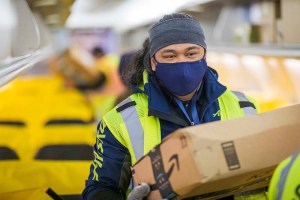 What happens next? Although we have just one cargo aircraft fitted with the in-seat solution, we’re planning to continue flying it in the state of Alaska to help with the holiday rush. The passenger aircraft will operate alongside our 3 freighters to supplement heavy holiday demands, which will help to free up space for cargo that truly needs the freighter.
What happens next? Although we have just one cargo aircraft fitted with the in-seat solution, we’re planning to continue flying it in the state of Alaska to help with the holiday rush. The passenger aircraft will operate alongside our 3 freighters to supplement heavy holiday demands, which will help to free up space for cargo that truly needs the freighter.
Depending on its continued success, Alaska hopes to expand the cargo container solution to other 737-900 aircraft throughout the rest of the winter. The extra capacity could allow us to bring 100,000 pounds of additional e-commerce into Southeast Alaska.
